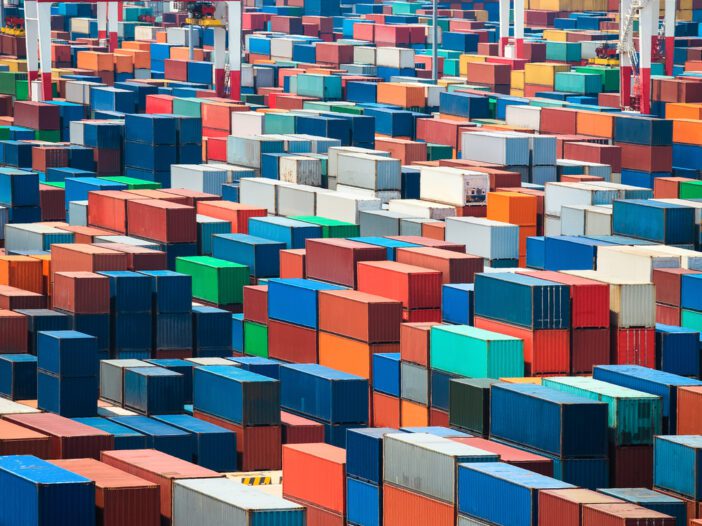Much attention has been paid to the container cargo situation in the Port of Los Angeles. This is the largest port in the US and one of the largest single supply chain bottlenecks in the world.
According to recent data, the Port of Los Angeles has 540,000 containers waiting in the harbour. The capacity of the port to unload containers is 18,000 containers per day. At that rate, it would take 30 days to unload the waiting containers. The problem is that about 29,000 new containers arrive every day. This means that the backlog increases by 11,000 containers per day. At that tempo, the backlog will be cleared…never.
The situation is even worse than those numbers reveal. The unload tempo of 18,000 containers per day assumes the port has somewhere to put the newly arrived containers. They don’t. Containers already unloaded are stacked as high as possible and cover all the available storage space. The situation is clearly unsustainable.
Shippers will stop directing vessels to the Port of Los Angeles (if possible) or simply stop shipping entirely if they can’t unload in a timely way. Of course, redirecting container traffic to other ports such as Tacoma or Houston simply moves the problem to another destination and causes backlogs at those ports.
There’s more to this port backlog than mere delay. Leaving containers on vessels anchored offshore is extremely costly. The vessels themselves are effectively out of service until they can be unloaded. This imposes huge costs on shippers or operators (called demurrage).
Due to delays, goods onboard may be unwanted or go out of fashion. Who wants to buy Christmas gifts the day (or month) after Christmas? Also, goods in transit are a form of inventory for the shippers. Every dollar of inventory is one less dollar in cash and creates huge financing and opportunity costs to the importer.
Experts estimate that up to US$90 billion in trade could be delayed in the coming weeks. Still, that figure only accounts for the gross value of goods delayed in transit. It doesn’t account for inventory financing costs, impaired customer relations, lost jobs (as some parts of the supply chain go underutilised due to delays in upstream parts), and the costs of spoilage, obsolescence, and receiving out-of-season deliveries. It’s not a stretch to suggest that the global economy could be looking at annual losses of US$1 trillion or more due to the supply chain breakdown.
The online option doesn’t work anymore
Some analysts naively suggest that people who can’t find what they need in stores should simply shop online. That’s ridiculous. Online shopping was a good option during the 2020 pandemic lockdowns, when bricks-and-mortar stores were closed, and consumers were afraid to venture outside. The difficulty then was not the supply chain but the contagion.
Today, online stores are subject to the same supply chain constraints as bricks-and-mortar retailers. It’s not as if online sites get their goods from different sources. All jeans, shirts, dresses, shoes, and electronics come from the same factories and pass through the same distribution channels regardless of whether they’re sold online or over the counter.
If you shop online, you’ll find user-friendly websites with attractive pictures of the merchandise you want. It’s only when you try to order that you’ll discover the outlet doesn’t have your size, style, or colour in stock.
I recently tried to buy some jeans online from Brooks Brothers. I found the webpage and item without difficulty, but the only waist size available was 30 inches. Sorry, my waist size is slightly larger. My online experience was no different than going to a store and finding empty shelves. Online shopping is not exempt from supply chain disruptions.
Most Americans have encountered the supply chain fiasco firsthand and don’t need statistics to know what’s going on. As explained above, the supply chain breakdown isn’t just an American phenomenon — it’s a global problem.
But as the world’s largest economy — driven 70% by consumption — it’s fair to say the US is ground zero in this disaster. Effects aren’t limited to the paper goods aisle at Costco like they were during the pandemic. The effects are everywhere.
There are bare spots on shelves in every aisle of the supermarket. Liquor stores can’t get certain kinds of wine. Garages can’t get auto parts. Doctors can’t get certain medical devices. If you’re going shopping for a very particular list, you should prepare for disappointment…
Regards,
 |
Jim Rickards,
Strategist, The Daily Reckoning Australia
This content was originally published by Jim Rickards’ Strategic Intelligence Australia, a financial advisory newsletter designed to help you protect your wealth and potentially profit from unseen world events. Learn more here.

